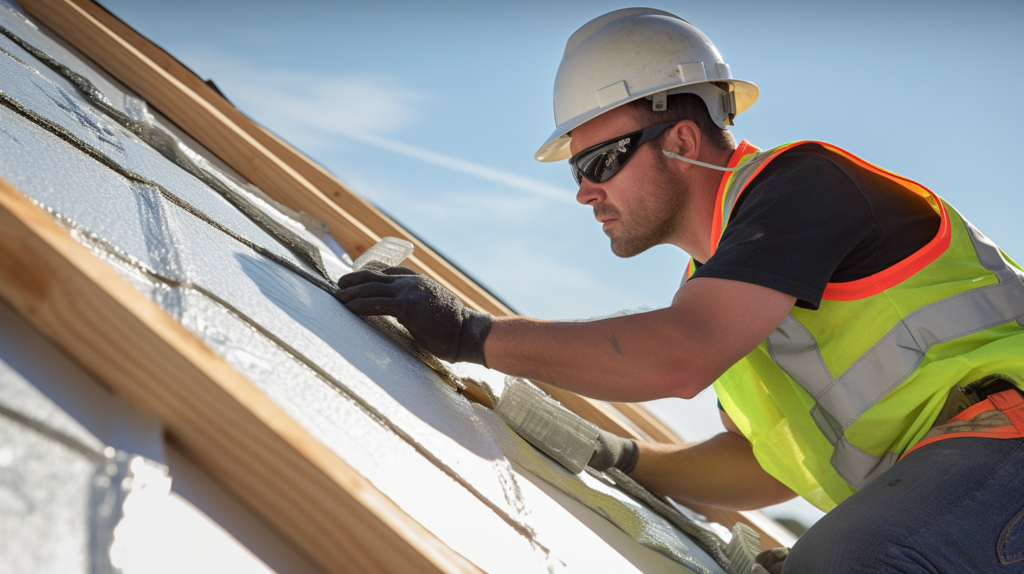If you’re looking to soundproof with Kingspan insulation, you may be wondering how well it performs.
The short answer is Kingspan alone does not provide true soundproofing.
But let’s dive in to understand Kingspan’s acoustic capabilities and how it can support effective sound isolation.
What is Kingspan Insulation?

Kingspan is a leading global manufacturer of high-performance insulation and building envelope solutions headquartered in Ireland.
The company has been in business since the 1960s and now operates in over 70 countries worldwide.
Kingspan offers a comprehensive range of insulation products used in residential, commercial and industrial construction applications.
Some of Kingspan’s most popular insulation materials include rigid foam boards and panels made from polyurethane, polyisocyanurate, phenolic foam and other plastic foams.
These insulation boards and panels are commonly used as exterior sheathing and interior drywall in walls, roofs and floors to improve energy efficiency and moisture control.
Kingspan’s insulation solutions are lightweight yet durable, providing enhanced R-values, strength and water resistance.
In addition to their insulation boards, Kingspan also manufactures insulation accessories such as tapes, adhesives and mechanical fasteners used during installation.
The company offers insulation for multiple building envelope components including walls, roofs, floors and foundation systems.
Kingspan aims to provide high-performance building insulation tailored for each application and climate.
Is Kingspan Insulation Soundproof?

No, Kingspan products are not designed to be soundproof.
While Kingspan is best known for their thermal insulation products, the company does offer some specialty products designed for soundproofing and noise control applications.
However, most standard Kingspan insulation boards alone are not sufficient as a sound barrier. Here is an overview of Kingspan’s acoustic insulation capabilities.
Kingspan’s Acoustic Insulation Products

Although Kingspan’s main focus is thermal insulation, they do manufacture some products specifically engineered for sound dampening and noise control.
These acoustic insulation products are designed with extra density and strategically configured layers to improve noise reduction.
One example is Kingspan Kooltherm K17 Insulated Plasterboard. This is a composite panel combining plasterboard, insulation and a sound-dampening membrane in one system.
The mass and isolation provided by its multi-layer buildup helps absorb airborne noise. Kingspan claims it can achieve enhanced acoustic performance comparable to traditional double-leaf plasterboard walls.
Kingspan also offers acoustic insulation under the brand GreenGuard. Their GreenGuard Acoustic Membrane is a thin, flexible insulation layer containing small rubber pellets.
Applied to walls and ceilings, it dampens noise vibration through the membrane’s high surface mass. Kingspan states it achieves significant sound reduction, especially in the low to mid-frequency ranges.
While a limited part of their total offerings, Kingspan does engineer and test some insulation systems specifically for sound blocking.
These acoustic products utilize specialized materials and construction to achieve much higher noise reduction than standard insulation boards.
Performance of Standard Kingspan Insulation

Kingspan’s primary insulation materials like Kooltherm and Optim-R are designed foremost for thermal insulation and energy efficiency.
While they may provide moderate noise dampening capabilities, Kingspan’s typical rigid foam boards would not be considered true soundproofing products.
The closed-cell, plastic foam makeup of most Kingspan insulation does assist somewhat with noise reduction.
The dense, non-porous foam structure lacks air cavities that would propagate sound vibrations.
However, standard Kingspan insulation on its own is not an effective barrier for blocking sound transmission, especially lower frequencies.
Comparatively, materials like heavy masonry, plasterboard and specialized acoustic panels inherently contain more mass and absorbent properties ideal for soundproofing.
Kingspan’s rigid foam boards may only marginally enhance noise control versus common gypsum drywall alone.
They lack the limp, flexible structure of purpose-built acoustic insulations for optimal sound dampening across all frequencies.
In summary, while they provide some level of noise reduction, regular Kingspan insulation boards and panels do not deliver adequate soundproofing performance equal to dedicated sound blocking alternatives.
They should only be considered supplemental enhancements as part of a complete acoustic system.
Tips for Using Kingspan Insulation for Soundproofing

There are some installation techniques that can maximize the noise dampening capabilities of Kingspan insulation, even if the products are not acoustic-specific:
- Layering multiple boards helps interrupt sound paths through the material. A twin-layer arrangement with staggered seams is ideal.
- Seal perimeter edges thoroughly with acoustic caulk to minimize sound flanking around the insulation. This includes all board joints, electrical boxes, windows, etc.
- In wall cavities, avoid direct contact between drywall and insulation. Use resilient channels or furring strips to create an air gap that enhances damping.
- Combine with other soundproofing materials like MLV barriers, double-leaf drywall, or full acoustic panels for multi-tier noise control.
When installed correctly in a well-planned system, Kingspan insulation can contribute to overall noise reduction, even if standing alone it is insufficient to be considered fully soundproof.
The key is addressing the complete sound pathway with a holistic approach, rather than relying solely on the insulation.
Considerations for Effective Soundproofing

While insulation certainly plays a role, there are several other critical factors to consider for true soundproofing in buildings:
Mass
Adding mass is one of the most effective ways to block noise transfer. Heavy, dense materials like concrete, brick, and thick drywall inherently improve sound isolation thanks to their limp, non-rigid structure.
The more mass a partition contains, the more sound energy it will absorb. Typical Kingspan insulation lacks sufficient mass on its own to effectively dampen acoustic vibrations.
Combining it with concrete, double stud walls, or multiple drywall layers improves performance.
Isolation
Physically isolating the sound source from the receiver space also minimizes noise transmission.
Installing the insulation on resilient channels or clips decouples the drywall from framing. Acoustic caulk seals air gaps that allow flanking.
Isolation prevents wall vibrations from transmitting sounds through connected hard surfaces. Kingspan should be used as part of an isolation strategy.
Absorption
Sound absorbing materials treat interior acoustics by reducing echo and reverberation. Soft, porous materials like insulation, carpet, and acoustic panels soak up sound energy instead of reflecting it.
This helps control noise within a space. But absorption alone does not prevent sound from transmitting through partitions.
Effective soundproofing requires a combination of blocking and absorption.
Holistic Approach
With any soundproofing project, the goal should be addressing the complete noise pathway – not just one component like insulation.
Mass, isolation, and absorption must work together to contain noise both within and between rooms.
Kingspan insulation can assist as part of the system but should not be solely relied upon as the only acoustic barrier. A comprehensive, multi-layered solution is required for true sound isolation.
Conclusion
In conclusion, Kingspan insulation products are not inherently soundproof. While certain specialty acoustic boards may provide noise reduction, their standard insulation materials lack the mass, isolation, and absorption qualities required for true sound blocking.
However, when properly installed as part of a comprehensive soundproofing system, Kingspan insulation can contribute to improved noise control.
Effective acoustic treatment requires addressing the complete sound pathway using a combination of sound-isolating materials and techniques.
